Betaine
Betaine is most often used for
Last Updated:December 4, 2023
Trimethylglycine (TMG) is a molecule which, structurally, is the amino acid glycine with three methyl groups attached to it. It is known as a "betaine" molecule ("betaine" being a category of molecules), but because it was the first dietary betaine discovered (from beetroot) and is the most popular molecule referred to as a betaine, the terms "trimethylglycine" and "betaine" are used interchangeably.
One of betaine's major mechanisms is its role as a methyl donor. Betaine either directly donates a methyl group to reduce homocysteine into L-methionine or it increases bodily levels of S-adenosyl methionine (SAMe) or active folate molecules, both of which can go on to donate methyl groups to other parts of the body.
Evidence in humans indicates that betaine effectively and reliably reduces homocysteine levels in both healthy people and people with various conditions.[2][1] However, betaine also appears to increase total and LDL-cholesterol at high doses (> 4 g per day).[1]
Elevated homocysteine levels have been associated with an increased risk of cardiovascular disease and cardiovascular events in several observational studies. However, correlation does not indicate causation. Although it is thought that reducing homocysteine levels is cardioprotective, interventions that lower homocysteine levels don’t seem to prevent cardiovascular events in people with cardiovascular disease.[3]
Betaine's other major mechanism is it acts as an osmolyte, or a molecule that is shuttled in and out of a cell to affect its hydration status. Similar to creatine, increased intracellular concentrations of betaine promote cell hydration and resilience to stressors.
Betaine (also known as TMG) is an "osmolyte", a molecule that regulates water balance in cells. Betaine can directly methylate homocysteine, which is potentially cardioprotective. It also indirectly affects folate and SAMe metabolism to support whole-body methylation.
Elsewhere, mechanistic evidence demonstrates that betaine is effective for preventing and improving nonalcoholic fatty liver disease,[4] but there is a lack of studies in humans. Two 1-year trials in participants with nonalcoholic steatohepatitis (NASH) observed an improvement in liver fat, inflammation, and fibrosis with a dosage of 10 g of betaine twice per day (20 g total), but there was no control group in either study.[5][6]A more recent 1-year randomized controlled trial in participants with NASH reported no improvement in liver fat, inflammation, or fibrosis with a dosage of 10 g of betaine twice per day.[7]
Finally, there is mixed evidence on the efficacy of betaine as a performance-enhancing compound. Most studies report that supplementation with betaine does not enhance maximal strength or power.[8] Betaine also doesn’t seem to enhance resistance exercise performance when low volumes (1–3 sets) are performed.[9][10] However, there is evidence to suggest that betaine enhances resistance exercise performance in protocols that challenge muscular endurance with high levels of metabolic stress.[11][12]
The mechanism by which betaine may improve resistance exercise performance in this specific context is unclear, but it may be due to betaine’s ability to attenuate increases in lactate levels during exercise.[11][12][13] It’s also hypothesized that betaine’s osmolytic effects help to enhance resistance exercise performance during high-volume training. Even so, this may be of no practical relevance because creatine shares this mechanism of action, and the lone study to evaluate supplementation with betaine and creatine failed to find an additive effect of betaine on creatine’s benefits.[14]
For reducing homocysteine levels, a daily dose of 3–6 g is most commonly used in research. In healthy people, a daily dose of 1.5–3 g might be just as effective as higher doses.[1]
A dosage of 2.5 g, typically split into two 1.25 g doses, has been used to improve resistance exercise performance.
Studies on liver fat and fibrosis have used a dosage of 20 g per day, divided into two 10 g doses.
High doses of betaine seem to be well tolerated by most people, but like any osmolyte, it can cause diarrhea at high doses. High doses of betaine can also increase total cholesterol and LDL-cholesterol levels.
🚧 Under Renovation 🚧
The information in this section is slated for renovation — it will soon be transformed into a more usable (and readable!) form in the coming months. As such, the text in this section may be out of date and not up to Examine’s current standards for writing style.
- ^Damoon Ashtary-Larky, Reza Bagheri, Matin Ghanavati, Omid Asbaghi, Grant M Tinsley, Delsa Mombaini, Wesam Kooti, Sara Kashkooli, Alexei WongEffects of betaine supplementation on cardiovascular markers: A systematic review and Meta-analysisCrit Rev Food Sci Nutr.(2021 Mar 25)
- ^Marc P McRaeBetaine supplementation decreases plasma homocysteine in healthy adult participants: a meta-analysisJ Chiropr Med.(2013 Mar)
- ^Arturo J Martí-Carvajal, Ivan Solà, Dimitrios Lathyris, Mark DayerHomocysteine-lowering interventions for preventing cardiovascular eventsCochrane Database Syst Rev.(2017 Aug 17)
- ^Madan Kumar Arumugam, Matthew C Paal, Terrence M Donohue Jr, Murali Ganesan, Natalia A Osna, Kusum K KharbandaBeneficial Effects of Betaine: A Comprehensive ReviewBiology (Basel).(2021 May 22)
- ^Abdelmalek MF, Angulo P, Jorgensen RA, Sylvestre PB, Lindor KDBetaine, a promising new agent for patients with nonalcoholic steatohepatitis: results of a pilot studyAm J Gastroenterol.(2001 Sep)
- ^Mukherjee et alImpact of Betaine on Hepatic Fibrosis and Homocysteine in Nonalcoholic Seatohepatitis - a Prospective, Cohort StudyThe Open Translational Medicine Journal.(2011-04-29)
- ^Abdelmalek MF, Sanderson SO, Angulo P, Soldevila-Pico C, Liu C, Peter J, Keach J, Cave M, Chen T, McClain CJ, Lindor KDBetaine for nonalcoholic fatty liver disease: results of a randomized placebo-controlled trialHepatology.(2009 Dec)
- ^Ismaeel AEffects of Betaine Supplementation on Muscle Strength and Power: A Systematic ReviewJ Strength Cond Res.(2017 Aug)
- ^Hoffman JR, Ratamess NA, Kang J, Rashti SL, Faigenbaum ADEffect of betaine supplementation on power performance and fatigueJ Int Soc Sports Nutr.(2009 Feb 27)
- ^Lee EC, Maresh CM, Kraemer WJ, Yamamoto LM, Hatfield DL, Bailey BL, Armstrong LE, Volek JS, McDermott BP, Craig SAErgogenic effects of betaine supplementation on strength and power performanceJ Int Soc Sports Nutr.(2010 Jul 19)
- ^Hamid Arazi, Shima Aboutalebi, Behzad Taati, Jason M Cholewa, Darren G CandowEffects of short-term betaine supplementation on muscle endurance and indices of endocrine function following acute high-intensity resistance exercise in young athletesJ Int Soc Sports Nutr.(2022 Mar 22)
- ^Trepanowski JF, Farney TM, McCarthy CG, Schilling BK, Craig SA, Bloomer RJThe effects of chronic betaine supplementation on exercise performance, skeletal muscle oxygen saturation and associated biochemical parameters in resistance trained menJ Strength Cond Res.(2011 Dec)
- ^Hunter S Waldman, Andrea R Bryant, Matthew J McAllisterEffects of Betaine Supplementation on Markers of Metabolic Flexibility, Body Composition, and Anaerobic Performance in Active College-Age FemalesJ Diet Suppl.(2021 Sep 3)
- ^Del Favero S, Roschel H, Artioli G, Ugrinowitsch C, Tricoli V, Costa A, Barroso R, Negrelli AL, Otaduy MC, da Costa Leite C, Lancha-Junior AH, Gualano BCreatine but not betaine supplementation increases muscle phosphorylcreatine content and strength performanceAmino Acids.(2011 Jul 9)
- Fibrinogen - Schwab U, Alfthan G, Aro A, Uusitupa MLong-term effect of betaine on risk factors associated with the metabolic syndrome in healthy subjectsEur J Clin Nutr.(2011 Jan)
- Serum Cobalamin - Alfthan G, Tapani K, Nissinen K, Saarela J, Aro AThe effect of low doses of betaine on plasma homocysteine in healthy volunteersBr J Nutr.(2004 Oct)
- Liver Fibrosis - Sandeep Mukherjee, Tamara Bernard, Kusum Kharbanda, Anthony J. Barak, Michael F. Sorrell, Dean J. TumaImpact of Betaine on Hepatic Fibrosis and Homocysteine in Nonalcoholic Steatohepatitis - A Prospective, Cohort StudyThe Open Translational Medicine Journal.()
- Liver Fibrosis - Abdelmalek MF, Angulo P, Jorgensen RA, Sylvestre PB, Lindor KDBetaine, a promising new agent for patients with nonalcoholic steatohepatitis: results of a pilot studyAm J Gastroenterol.(2001 Sep)
- Oxygen Uptake - Armstrong LE, Casa DJ, Roti MW, Lee EC, Craig SA, Sutherland JW, Fiala KA, Maresh CMInfluence of betaine consumption on strenuous running and sprinting in a hot environmentJ Strength Cond Res.(2008 May)
- Lean Mass - Pryor JL, Craig SA, Swensen TEffect of betaine supplementation on cycling sprint performanceJ Int Soc Sports Nutr.(2012 Apr 3)
- IGF-1 - Apicella JM, Lee EC, Bailey BL, Saenz C, Anderson JM, Craig SA, Kraemer WJ, Volek JS, Maresh CMBetaine supplementation enhances anabolic endocrine and Akt signaling in response to acute bouts of exerciseEur J Appl Physiol.(2013 Mar)
- Power Output - Hoffman JR, Ratamess NA, Kang J, Rashti SL, Faigenbaum ADEffect of betaine supplementation on power performance and fatigueJ Int Soc Sports Nutr.(2009 Feb 27)
- Power Output - Hoffman JR, Ratamess NA, Kang J, Gonzalez AM, Beller NA, Craig SAEffect of 15 days of betaine ingestion on concentric and eccentric force outputs during isokinetic exerciseJ Strength Cond Res.(2011 Aug)
- Power Output - Del Favero S, Roschel H, Artioli G, Ugrinowitsch C, Tricoli V, Costa A, Barroso R, Negrelli AL, Otaduy MC, da Costa Leite C, Lancha-Junior AH, Gualano BCreatine but not betaine supplementation increases muscle phosphorylcreatine content and strength performanceAmino Acids.(2011 Jul 9)
- Power Output - Trepanowski JF, Farney TM, McCarthy CG, Schilling BK, Craig SA, Bloomer RJThe effects of chronic betaine supplementation on exercise performance, skeletal muscle oxygen saturation and associated biochemical parameters in resistance trained menJ Strength Cond Res.(2011 Dec)
- Power Output - Lee EC, Maresh CM, Kraemer WJ, Yamamoto LM, Hatfield DL, Bailey BL, Armstrong LE, Volek JS, McDermott BP, Craig SAErgogenic effects of betaine supplementation on strength and power performanceJ Int Soc Sports Nutr.(2010 Jul 19)
- Total cholesterol - Olthof MR, van Vliet T, Verhoef P, Zock PL, Katan MBEffect of homocysteine-lowering nutrients on blood lipids: results from four randomised, placebo-controlled studies in healthy humansPLoS Med.(2005 May)
- Serum Cobalamin - Margreet R Olthof, Michiel L Bots, Martijn B Katan, and Petra VerhoefEffect of Folic Acid and Betaine Supplementation on Flow-Mediated Dilation: A Randomized, Controlled Study in Healthy VolunteersPLoS.()
- Serum Cobalamin - Steenge GR, Verhoef P, Katan MBBetaine supplementation lowers plasma homocysteine in healthy men and womenJ Nutr.(2003 May)
- Homocysteine - Schwab U, Törrönen A, Toppinen L, Alfthan G, Saarinen M, Aro A, Uusitupa MBetaine supplementation decreases plasma homocysteine concentrations but does not affect body weight, body composition, or resting energy expenditure in human subjectsAm J Clin Nutr.(2002 Nov)
- Homocysteine - Schwab U, Törrönen A, Meririnne E, Saarinen M, Alfthan G, Aro A, Uusitupa MOrally administered betaine has an acute and dose-dependent effect on serum betaine and plasma homocysteine concentrations in healthy humansJ Nutr.(2006 Jan)
- Homocysteine - Brouwer IA, Verhoef P, Urgert RBetaine supplementation and plasma homocysteine in healthy volunteersArch Intern Med.(2000 Sep 11)
- Homocysteine - Atkinson W, Slow S, Elmslie J, Lever M, Chambers ST, George PMDietary and supplementary betaine: effects on betaine and homocysteine concentrations in malesNutr Metab Cardiovasc Dis.(2009 Dec)
- Homocysteine - Margreet R. Olthof, Trinette van Vliet, Esther Boelsma, and Petra VerhoefLow Dose Betaine Supplementation Leads to Immediate and Long Term Lowering of Plasma Homocysteine in Healthy Men and WomenThe Journal of Nutrition.()
- Weight - Abdelmalek MF, Sanderson SO, Angulo P, Soldevila-Pico C, Liu C, Peter J, Keach J, Cave M, Chen T, McClain CJ, Lindor KDBetaine for nonalcoholic fatty liver disease: results of a randomized placebo-controlled trialHepatology.(2009 Dec)
- Salivation - Pia López-Jornet, Fabio Camacho-Alonso, Consuelo Rodriguez-AguadoEvaluation of the clinical efficacy of a betaine-containing mouthwash and an intraoral device for the treatment of dry mouthJ Oral Pathol Med.(2012 Mar)
- Salivation - Ship JA, McCutcheon JA, Spivakovsky S, Kerr ARSafety and effectiveness of topical dry mouth products containing olive oil, betaine, and xylitol in reducing xerostomia for polypharmacy-induced dry mouthJ Oral Rehabil.(2007 Oct)
- Salivation - E Söderling, A Le Bell, V Kirstilä, J TenovuoBetaine-containing toothpaste relieves subjective symptoms of dry mouthActa Odontol Scand.(1998 Apr)
- Dry Mouth Symptoms - Rantanen I, Tenovuo J, Pienihäkkinen K, Söderling EEffects of a betaine-containing toothpaste on subjective symptoms of dry mouth: a randomized clinical trialJ Contemp Dent Pract.(2003 May 15)









